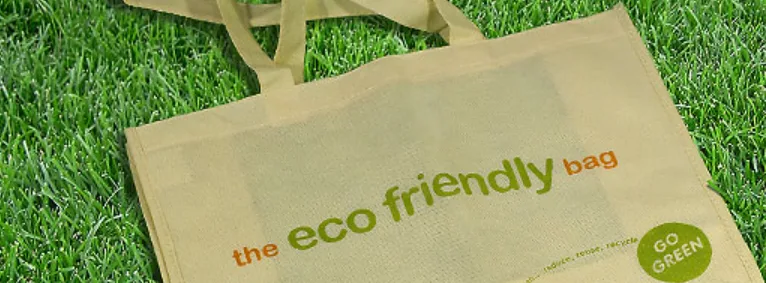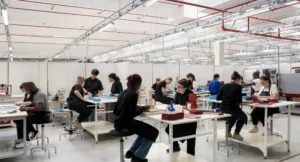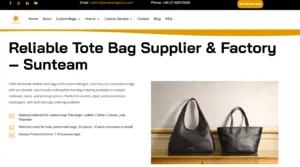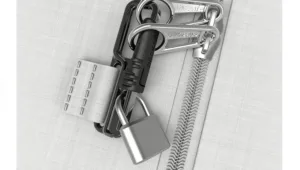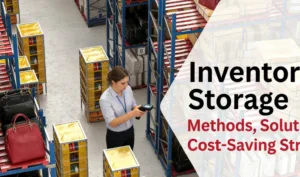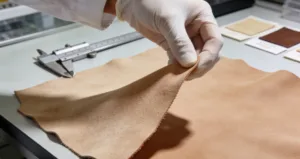Want your brand to stand out while reducing waste? Custom bags with eco-friendly features are a powerful solution—they’re practical, reusable, and showcase your commitment to sustainability. But with so many options, how do you pick the right one for your brand?
The secret isn’t just the material—it’s about durability, design, and authenticity. Let’s break down how to choose bags your customers will love (and reuse).
Contents
- 1 1. Purpose-Driven Bag Selection
- 2 2. Material Selection Matrix
- 3 3. Eco-Conscious Customization
- 4 4. Assess Custom Bag Size and Features
- 5 5. Partner with Expert Bag Mass Production Manufacturers
- 6 6. Select bag designs that reflect both your brand story and eco-conscious values
- 7 7. Evaluate the manufacturer’s sustainability practices and certifications
- 8 8. Prioritize custom bag features that promote eco-friendly lifestyles
- 9 9. Consider the bag’s versatility and environmental impact across scenarios
- 10 Summary
1. Purpose-Driven Bag Selection

Define bag functionality through dual analysis. First, examine brand positioning. Second, study customer behavior patterns. Grocery custom tote bags serve daily shopping needs. The UK’s Waitrose supermarket chain demonstrates effectiveness. Their organic cotton totes achieve 214 average uses per bag. This reduces single-use plastic consumption by 93% per customer annually.
Premium materials convey brand respect. Tiffany & Co.’s signature blue gift bags exemplify this strategy. Their 2023 customer survey shows 78% of recipients reuse these bags for special occasions. Durability becomes brand memorability.
2. Material Selection Matrix

Sustainable materials require lifecycle analysis. Consider these six options with verified performance data:
| Material | Details |
|---|---|
| Coton | Tensile strength: 20-40 N/mm² (Textile Exchange 2023)
Biodegrades within 11 weeks in composting conditions |
| Canvas | 18oz weight withstands 50kg loads (ISO 13934-1 standard)
Patagonia’s recycled canvas program diverts 23 tons/year from landfills |
| Jute | Decomposes in 2-3 years vs plastic’s 450+ years
Etsy sellers report a 65% sales increase with raw jute aesthetics |
| Juco Blends | 70% jute/30% cotton balances durability and softness
Everlane’s market bag uses this blend, achieving 4.8/5 customer durability ratings |
| RPET | Each bag contains 8-12 recycled plastic bottles
Adidas RPET backpacks prevented 3.2 million bottles from ocean pollution (2022 ESG report) |
| Recycled Paper | 90% post-consumer waste content minimum
Apple’s paper mailers withstand 3kg weights with honeycomb structures |
3. Eco-Conscious Customization
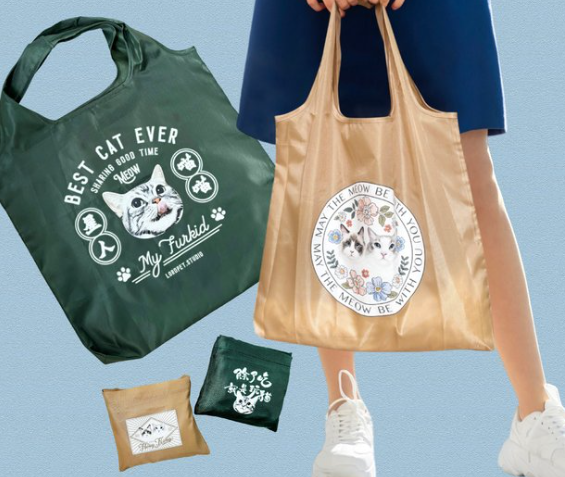
In the development of consumer products, extensive testing has been conducted on various green decoration techniques, revealing impressive environmental benefits. Compared to plastisol options, water-based inks perform significantly better, reducing VOC emissions by 87%—a substantial improvement to the environmental footprint of every bag. Furthermore, during a visit to The Body Shop’s innovation lab last spring, the discovery of algae-derived pigments offered additional inspiration for some custom bag manufacturers. These bio-based inks not only serve as colorants but also enrich the soil when the bags are composted, contributing to a circular and sustainable solution.
For adding texture and a premium feel, and embroidery works very well. It looks great on natural materials like jute or linen. Using linen thread on jute creates a feel that customers seem to value more. The Fashion Institute’s latest research suggests this value is about 34% higher. My retail clients often report similar findings to what Kate Spade measured: embroidered floral motifs on tote bags sell 28% faster than printed ones. This shows that sustainability can improve how products look and sell.
Structural Enhancements
1. Modular pockets: IKEA’s configurable bag system increased accessory sales 15%
2. Convertible straps: Longchamp’s adjustable system enables 7 carrying modes
Implementation Case: Starbucks Holiday Collection
Challenge:
Create festive bags that align with the 2030 zero-waste goals
Solution:
| Category | Details |
|---|---|
| Base Material | 100% recycled coffee sack canvas |
| Printing | Coffee ground-based inks |
| Feature | Detachable reusable cup holder |
| Results | 420,000 units sold in 3 weeks
92% of customers reported reuse for non-coffee purposes The material recovery rate reached 73% through the store return program |
4. Assess Custom Bag Size and Features

Selecting the bag’s size and features should depend on how it will be used. For large weekly grocery runs, sturdy canvas or juco bags are essential, as they provide the durability needed to handle heavy loads. Using a thin bag to carry fresh produce and milk bottles once resulted in snapped handles in the parking lot — a clear reminder of the importance of strong materials. Since then, thick canvas bags with reinforced seams have proven to be far more reliable, offering peace of mind when lifting heavier items. In fact, even heavy garden tools have been successfully carried in a juco bag, demonstrating its impressive strength.
For smaller errands, such as picking up a book or a few snacks, compact cotton or paper bags are more suitable. A small cotton tote works well for farmers market visits, comfortably holding a few apples and a loaf of bread. The soft texture of cotton adds a pleasant touch, while paper bags evoke the simplicity of school lunch days — ideal for carrying light items in everyday life.
On hot summer days, insulated bags become indispensable. During a recent heatwave, ice cream and frozen dumplings remained perfectly cold inside an insulated bag, even after a long commute. Upon opening, the cool air inside caused glasses to fog up — a clear sign of the bag’s effective lining. These bags now serve as a regular go-to for preserving food freshness, especially when errands follow grocery shopping.
Ultimately, matching the bag to the purpose makes all the difference. Carefully considering the material and design helps avoid unnecessary hassle and enhances the shopping experience. A tough juco bag is ideal for heavy-duty tasks, while a soft cotton tote suits quick outings. Moreover, thoughtful design — whether through cheerful colors or convenient pockets — adds both function and joy. Choosing reusable, eco-friendly bag options not only solves practical problems but also reinforces a sense of responsible, mindful living. Even a small step can contribute to a more sustainable lifestyle.
| Bag Type/Feature | Description |
|---|---|
| Large Bags | Canvas or juco bags are good choices for lots of groceries or heavy things. |
| Small Bags | Cotton or paper bags are suitable for lighter items or when you need something compact. |
| Insulated Linings | Help keep food fresh. |
| Multiple Sections | Help keep things organized and can also protect breakable items. |
| Design and Purpose | Think about the bag’s purpose, material, design, and features to ensure it’s useful and environmentally mindful. |
5. Partner with Expert Bag Mass Production Manufacturers

Selecting a reliable manufacturer ensures product success. Experienced partners like Sunteam prove this. With three decades in bag production, they help brands avoid design errors, and OEM solutions serve global clients effectively.
Manufacturers guide material choices. They recommend construction methods. Retailers often need heavy-duty handles. Corporate clients prefer sleek finishes. Such expertise ensures functional durability. Clear communication maintains project flow. Sunteam provides prototype reviews. They share real-time bag production updates. These practices prevent delays in bulk orders. Consistent quality requires such professional partnerships.
6. Select bag designs that reflect both your brand story and eco-conscious values

Each stitch conveys values. Eco-conscious brands demonstrate this through materials. Patagonia uses recycled fabrics with visible weave patterns. Luxury brands adopt different tactics. Louis Vuitton monogram canvas exemplifies iconic branding.
Color palettes matter deeply. Earth tones signal sustainability. Pantone 15-0343 (greenery) works for organic brands. Neon accents attract urban youth markets. Adidas Originals uses fluorescent stripes successfully. Design consistency builds recognition. Apple maintains uniform packaging across devices. Similarly, reusable bag templates and the manufacture of polyethylene bags create coherence. Sunteam helps standardize logos and proportions. This strengthens brand presence across markets.
7. Evaluate the manufacturer’s sustainability practices and certifications

Scalability separates good suppliers from great ones. Sunteam’s facilities handle 300 to 300,000 units with ease. Automated cutting machines ensure precision during the custom bag, while modular assembly lines swiftly adapt to varying order sizes. Quality control is non-negotiable—each batch undergoes rigorous stress tests, with seams enduring 50kg pull weights and zippers surviving 5,000 open-close cycles. To ensure international standards are met, key product tests are verified by independent third-party labs such as TÜV. These benchmarks minimize risks and prevent customer complaints.
Regional production hubs reduce logistics costs. Our Vietnam bag factory serves Asian markets. The Mexico center supplies the Americas. This geographic strategy cuts shipping time by 40%.
Implementation Example
A skincare brand needed eco-retail bags. Sunteam proposed a custom bag made from 12oz RPET fabric. They embedded wildflower seeds in care tags, allowing customers to plant them and grow poppies. This circular design not only emphasized sustainability but also boosted Instagram mentions by 180%.
Advanced planning helps avoid production bottlenecks during peak seasons or new product launches. By working with a manufacturer who understands market dynamics, you can forecast demand, book early production slots, and maintain inventory without overstocking. At Sunteam, they support our B2B clients with data-driven recommendations to improve supply chain efficiency and product availability.
8. Prioritize custom bag features that promote eco-friendly lifestyles

Custom packaging is a powerful tool for deepening customer relationships. Whether handed out at trade shows, included in premium retail experiences, or used as part of a loyalty program, Custom Golf Bags create lasting brand interactions. When designed with care, they transform into reusable brand ambassadors—used daily and seen by many.
Adding interactive or value-driven elements to your bags can increase user engagement. For example, QR codes printed on the inner lining can direct customers to a landing page, tutorial, or exclusive offer. These small digital touchpoints help connect physical products with online experiences, especially when dealing with younger audiences.
A smartly designed OEM bag also encourages repeat use, reducing waste and boosting long-term visibility. At Sunteam, we advise clients on small but impactful add-ons—like personalized thank-you messages or functional features—that surprise and delight end users. Whether it’s a unique design or an eco-friendly bag, this attention to detail helps businesses stand out in competitive B2B sectors and adds emotional value to every interaction.
9. Consider the bag’s versatility and environmental impact across scenarios

High-performing Custom Bags adapt across touchpoints. A tote designed for store purchases should equally serve as a trade show giveaway. We achieve this through convertible features—detachable shoulder pads for comfort during events, or collapsible structures for easy retail display. One hospitality client saw 40% higher retention rates after adding luggage tag slots to their conference totes, demonstrating how thoughtful add-ons enhance utility.
Consistency remains crucial. Whether producing 500 premium gift bags or 50,000 promotional carriers, your Custom Bag must maintain color accuracy and stitching quality. Sunteam’s digital color-matching system ensures brand hues remain consistent across material types, from rugged canvas to sleek synthetic blends.
Summary
Eco-friendly bags aren’t just packaging—they’re a statement. By choosing certified materials, thoughtful designs, and ethical manufacturers, your brand can make an impact while staying memorable.
Ready to start? → [Contact us for a free Sustainable Bag Checklist] ← or share your biggest challenge in the comments!

